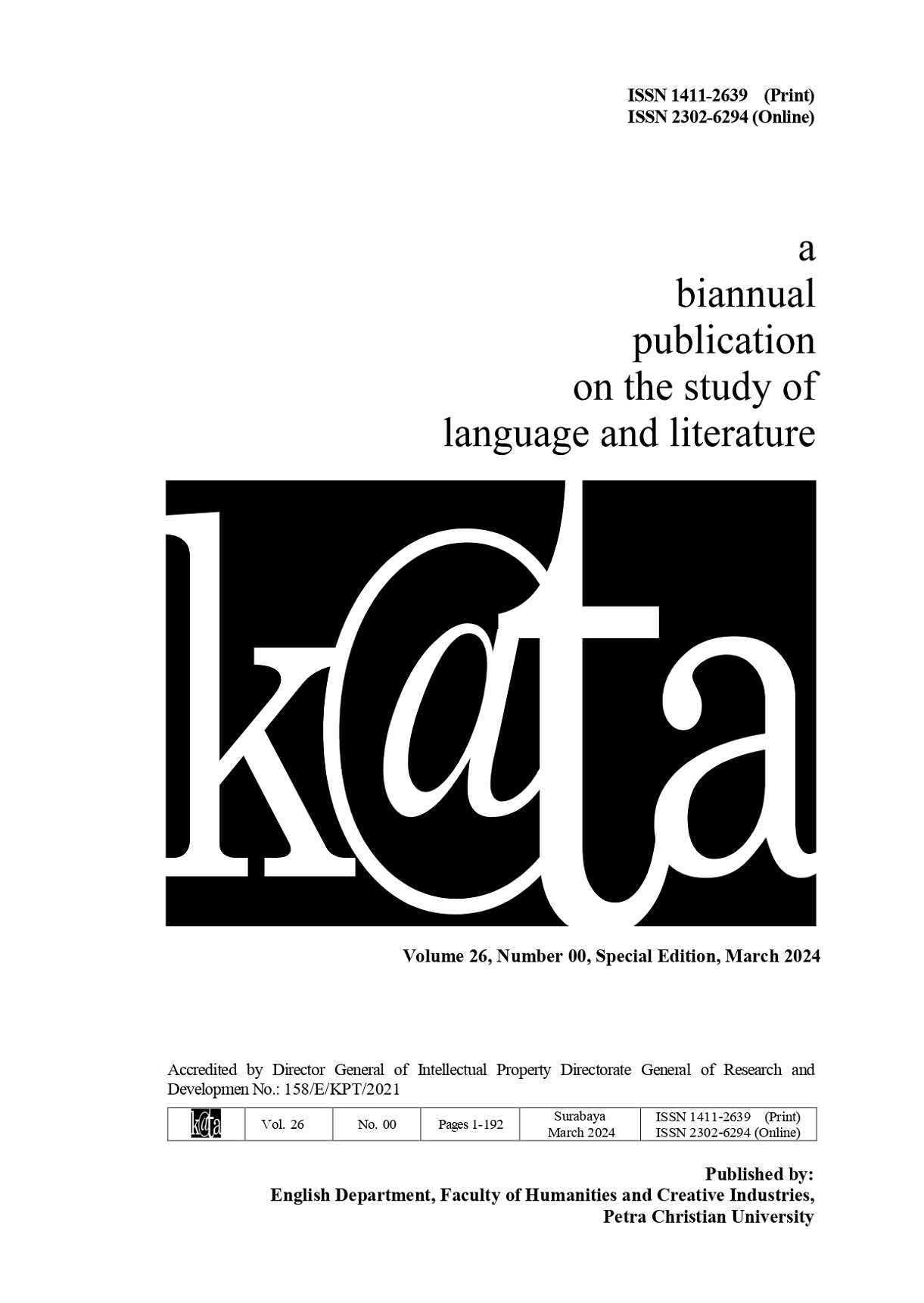In Search of Public Support Toward Cultural Pluralism Enacted by Chinese “Potehi” Puppetry Acculturation
DOI:
https://doi.org/10.9744/kata.26.00.83-92Keywords:
Acculturation, Culture, Etnicity, Pluralism, PotehiAbstract
Indonesia is a country built from cultural pluralism and multi ethnicities. “Bhineka Tunggal Ika” is a paradigm propagated to build community’s mindset to build understanding among people from different traits, cultures, and religions. Diversities have potentials to increase social tensions, crises, and extremism that are all threatened the community resilience. At the same time, diversities continue to increase together with the increased number of migrations. As such, cultures embedded to migrated people and acculturate into the local people and cultures. One of the products of acculturation is Chinese Glove Puppetry, or Wayang Potehi. There have been so many studies investigating the acculturation process and the efforts of the enthusiasts to make this culture accepted by the local people. This is a good phenomenon as the understanding multiculturalism leading to strong resilience. However, there is a lack of data of how the commitment of public either from a group of local people and Chinese descendants in Indonesia accepting this acculturation and accepting this as a part of cultural pluralism. The present study surveyed 102 respondents revealing their commitment toward pluralism. The findings revealed driving and inhibiting factors. National ideology, the urge to unite, and external dangers are driving forces, while inadequate appreciation of pluralism, tolerance, and social disparity are inhibiting forces.
Downloads
References
Karsono, O. M. F., & Wijaya, Y. A. (2012). The Javanese Potehi Puppeteer iSurabaya. Journal of Basic and Applied, 2(2). www.textroad.com
Kuardhani, H. (n.d.). Potehi Puppet (布袋戲) in Java.
Kunst, J. R., Lefringhausen, K., Skaar, S. W., & Obaidi, M. (2021). Who adopts the culture of ethnic minority groups? A personality perspective on majority - group members’ acculturation. International Journal of Intercultural Relations, 81, 20–28. https://doi.org/10.1016/j.ijintrel.2021.01.001
Kurniawan, H. (2017). Potehi In New Order’s Restraint: The Lost of Inheritor Generation of Chinese Wayang Culture. International Journal of Humanity Studies, 1(1), 47–55. https://doi.org/10.24071/ijhs.2017.010105
Mangunsong, H. R. B., & Djatiprambudi, D. (2021). Kajian proporsi wajah Wayang Potehi perempuan di Gudo, Jombang dengan proporsi rasio emas. Gondang: Jurnal Seni dan Budaya, 5(1), 71.
https://doi.org/10.24114/gondang.v5i1.21197
Motti-Stefanidi, F. (2018). Resilience among immigrant youth: The role of culture, development and acculturation. Developmental Review, 50, 99–109. https://doi.org/10.1016/j.dr.2018.04.002
Muslifah, S., Rustopo, R., & Sarwanto, S. (2019). The existence and change of Wayang Potehi in Gudo, Jombang. 3rd International and Interdisciplinary Conference on Arts Creation and Studies (IICACS 2019), 90–95.
Stenberg, J. (2015). Wayang potehi: Glove puppets in the expression of Sino-Indonesian identity. Journal of Southeast Asian Studies, 46(3), 391–416. https://doi.org/10.1017/S0022463415000314
Downloads
Published
How to Cite
Issue
Section
License
![]() This work is licensed under a Creative Commons Attribution License
This work is licensed under a Creative Commons Attribution License



.png)
.png)

















